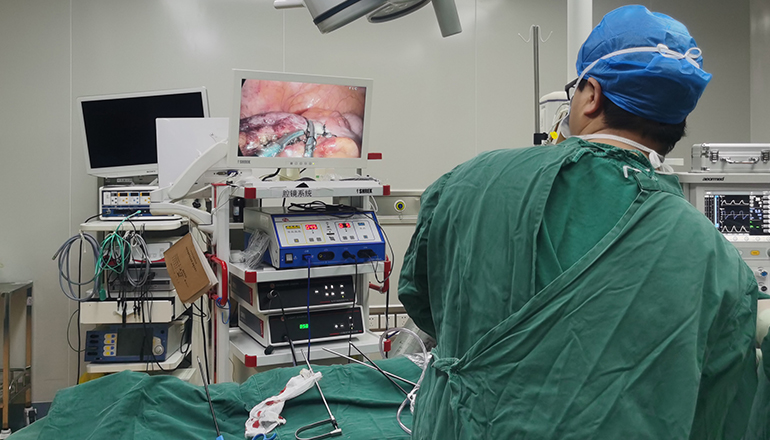- Shanghai, China
- [email protected]
- +86-21-58189111
Endoscopic cameras have various applications in modern medicine, enabling physicians to diagnose and treat various medical conditions without invasive procedures. Here are some of the common applications of medical endoscopic cameras:
Gastrointestinal endoscopy: Gastrointestinal endoscopy is a diagnostic and therapeutic procedure that allows physicians to visualize the digestive tract, including the esophagus, stomach, and intestines. Endoscopic cameras are used to detect abnormalities such as tumors, inflammation, ulcers, and bleeding. Additionally, endoscopic cameras are used in therapeutic procedures, such as polyp removal, stent placement, and dilation of strictures.
Bronchoscopy: Bronchoscopy is a diagnostic and therapeutic procedure that allows physicians to visualize the airways in the lungs. Endoscopic cameras are used to diagnose and treat various respiratory conditions, including lung cancer, pulmonary infections, and asthma. Additionally, endoscopic cameras are used in therapeutic procedures such as bronchial dilation and removal of foreign bodies.
Laparoscopy: Laparoscopy is a minimally invasive surgical procedure that allows physicians to visualize the inside of the abdomen using an endoscope. Endoscopic cameras are used to perform various surgical procedures, including gallbladder removal, appendectomy, and hernia repair. Laparoscopy is associated with less pain, smaller incisions, and faster recovery times than traditional open surgery.

Hysteroscopy: Hysteroscopy is a diagnostic and therapeutic procedure that allows physicians to visualize the inside of the uterus. Endoscopic cameras are used to diagnose and treat various gynecologic conditions, including fibroids, polyps, and abnormal bleeding. Additionally, endoscopic cameras are used in therapeutic procedures such as removal of intrauterine devices and endometrial ablation.
Arthroscopy: Arthroscopy is a minimally invasive surgical procedure that allows physicians to visualize the inside of joints using an endoscope. Endoscopic cameras are used to diagnose and treat various orthopedic conditions, including torn ligaments, meniscus tears, and arthritis. Arthroscopy is associated with less pain, smaller incisions, and faster recovery times than traditional open surgery.
Urology endoscopy: Urology endoscopy is a diagnostic and therapeutic procedure that allows physicians to visualize the urinary tract using an endoscope. Endoscopic cameras are used to diagnose and treat various urologic conditions, including kidney stones, bladder tumors, and prostate enlargement. Additionally, endoscopic cameras are used in therapeutic procedures such as laser lithotripsy and stent placement.
Endoscopic cameras have various applications in modern medicine, enabling physicians to diagnose and treat various medical conditions without invasive procedures. Endoscopic cameras are used in gastroenterology, pulmonology, urology, gynecology, orthopedics, and other medical specialties. While endoscopic procedures have potential risks and complications, they offer significant benefits and are an essential tool for physicians in many medical specialties.
Moreover, the development of new technologies, such as artificial intelligence and machine learning, is enabling endoscopic cameras to become even more sophisticated. For example, researchers are exploring the use of computer vision and machine learning algorithms to help identify abnormalities in endoscopic images more accurately and efficiently.
Additionally, advancements in endoscopic imaging technology are allowing for more detailed and high-quality images. For instance, multispectral endoscopic cameras can capture images in different wavelengths of light, enabling physicians to visualize tissues and structures that are not visible with traditional endoscopic cameras.
In conclusion, endoscopic cameras are a critical tool in modern medicine, allowing for less invasive and more accurate diagnosis and treatment of various medical conditions. They have several applications in gastroenterology, pulmonology, urology, gynecology, orthopedics, and other medical specialties. The development of new technologies, such as artificial intelligence and machine learning, and advancements in endoscopic imaging technology is expanding the potential applications of endoscopic cameras in medicine. However, patients undergoing endoscopic procedures should receive thorough evaluation and discussion of the risks and benefits before the procedure.
Leave a Comments